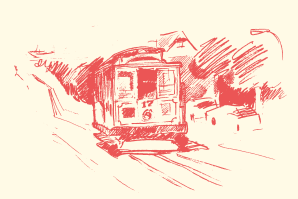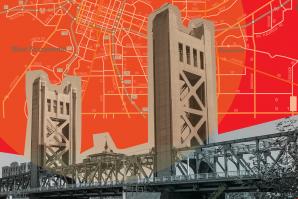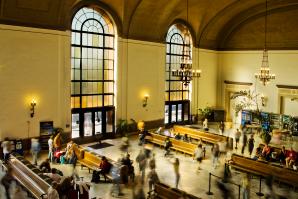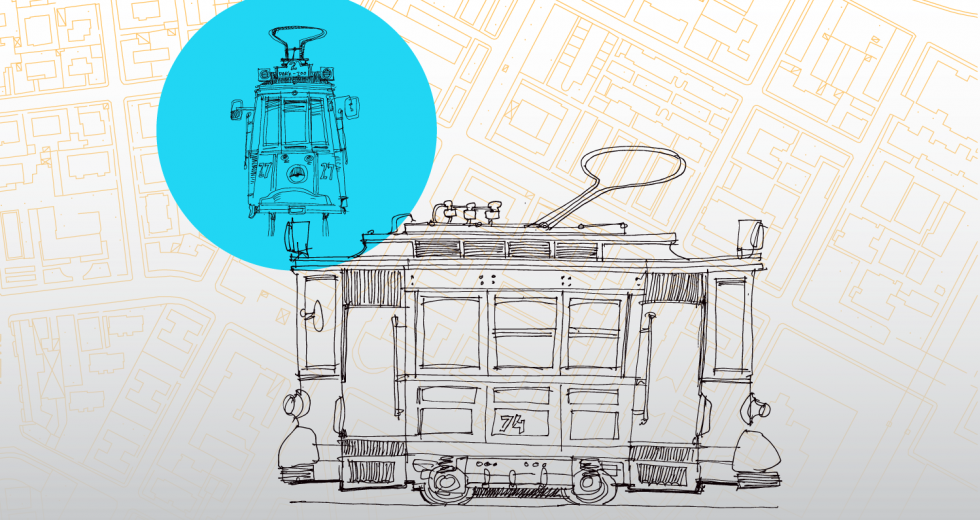If Portland can have one, Sacramento can, too. That is the sentiment among those in favor of running a 3.3-mile trolley line through the heart of the River City.
The proposed streetcar system has been in development for nearly a decade, but this year the $150 million project has been on the fast track. Sacramento County, West Sacramento and the federal government have all committed millions of dollars in funding support. In February, 66 percent of property owners along the proposed route voted to build the line, which would connect the urban core to the riverfront in West Sacramento. But that was just an advisory vote.
The big test will be next month. In May, registered voters who live within the streetcar district boundaries (about 3,800 residents) will vote on whether the city should create an assessment district to pay for the project. If two-thirds approve, the district will issue $30 million in bonds. These funds will be repaid by property owners in annual assessments until the bonds are retired, says Michael Ault, executive director of the Downtown Sacramento Partnership.
The annual assessments would vary depending on the property owner’s proximity to the proposed line, and the parcel and building sizes. For example, commercial property owners on the streetcar line would pay 5 cents per square foot for land and 16 cents per square foot for building space. Fees decrease for property owners one and two blocks away, and those further than that won’t get charged. Despite early concerns from some owners, Ault believes the vote will pass.
“We heard rumblings from a few people with unanswered questions,” he says. “But every time we reached out and explained more of the project details and anticipated return on investment, we got a favorable response. I expect a good show of support.”
Urban trolleys fell out of style after World War II. But since opening in 2001, Portland’s modern streetcar system has sparked a resurgence of interest across the country. Streetcar systems are different from light rail systems, which use larger cars and make fewer stops for longer trips to the suburbs. Streetcars flow with traffic and stop more frequently to connect popular destinations and notable landmarks in the urban core. Last year, Sacramento leaders, hoping to follow Portland’s lead, took a trip north for a research tour.
“Riding the NS streetcar line to the Portland Pearl District to hear about how it connects diverse neighborhoods,” Rep. Doris Matsui wrote on Twitter.
Such a system in Sacramento would boost economic development downtown and get cars off the streets. It’s ideal for urban commuters, pedestrians and tourists, according to Kirk Trost, chief operating officer and general counsel for Sacramento Area Council of Governments.
Critics doubt these claims. In a January report from Eye on Sacramento, the civic watchdog group found no sufficient evidence that the streetcar would reduce traffic congestion or spur economic growth downtown. In Portland, urban development along the route got a big boost from significant tax and government subsidies, the report noted, but Sacramento has no package of development incentives. EOS President Craig Powell wrote that any economic growth from a streetcar could be achieved for less money by deploying modern transit buses.
But property owners believe in the streetcar, and they’re prepared to help pay for it. Funding for Portland’s system comes from various public sources. There have also been Local Improvement Districts set up on each of the capital projects, totaling approximately 20 percent of all local funds spent, according to Portland Streetcar Inc.
For Sacramento’s project, the federal government set aside $75 million in its 2016 budget, which Trost says won’t get released unless all other funds are committed by Sept. 30. So far, the Sacramento City Council has committed $7 million. West Sacramento pledged $25 million. The County of Sacramento is expected to take action in March on a $3 million contribution. The State of California has been asked to contribute $10 million. However, everything hinges on the registered voter election. Without voter approval of the assessment district, the whole plan flies off the rails.
Recommended For You

Streetcar Split
Federal funding comes through for Sacramento transportation project, but opponents remain skeptical
Sacramento’s streetcar project gained steam Feb. 2 when supporters received promising news about federal funding, but opponents still question the streetcar’s potential benefits to downtown’s economic development.

Bridging the Divide
West Sacramento’s massive transportation shift is redefining its identity
Long regarded as the region’s industrial bastion relegated to the other side of the river, today’s West Sacramento is barreling out of the past.

Railway Station Revamp
Updates to Sacramento Valley Station include bike rentals and rooftop patio
At 88 years old, the Sacramento Valley Station at 4th and I streets is bound for new glory, as the second phase of the $34-million rejuvenation project gets underway at the city’s downtown transportation hub.

Streetcar Named Desire
Funding questions loom over downtown streetcar project
For nearly two decades, local city officials have envisioned a streetcar that would transport residents and visitors across downtown Sacramento.




Comments
How do you know that "But property owners believe in the streetcar, and they’re prepared to help pay for it." I'm a property owner who has lived in central cities far denser e.g. Portland, than Sacramento has and I'm NOT prepared to pay for it even though I strongly support and take public transit. The mayor's plan for 10,000 new housing units in 10 years is a laughably pathetic effort toward obtainin greater desity to support downtown businesses. Allowing renters to vote on this--they number 87% of the population smacks of stacking the deck. As a former landlord and on very friendly terms with my next door tenants, they are TRANSIENT. They can vote for the project, then the day, week or so after the vote can and many will move leaving the property owners stuck with the bill and future tenants stuck with paying higher rent. Those who want the trolley so badly because they think the economic benefits are so great should PAY for it rather than dumping the burden on we long time property owners. They won't do that because they know the project is too risky.